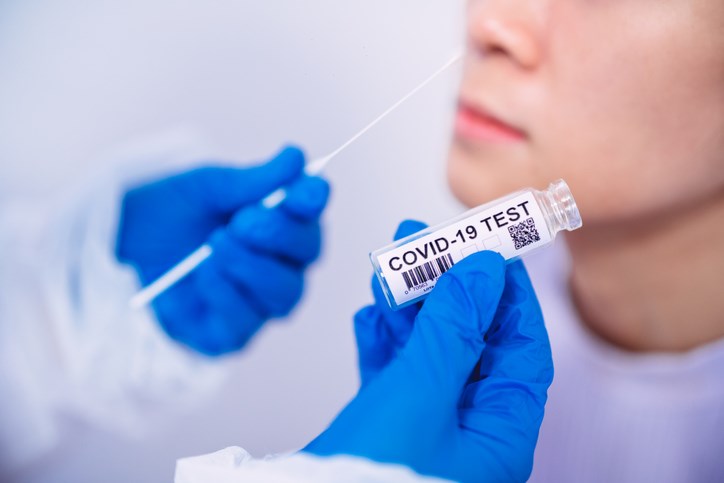Explained: COVID-19 PCR Testing and Cycle Thresholds

PCR, DNA, RNA, affectability, enhancement, cycle edges?
There’s a ton of data out there on COVID-19 testing, and you’ve most likely run over these words previously. Yet, their meaning could be a little clearer. For what reason would they say they are significant for COVID-19 testing? Also, how would they all fit together? We will separate everything for you.
Understanding COVID-19 terms
Before we start, see some normal terms.
Covid: are an enormous group of infections that cause sickness in warm blooded creatures and birds. In people, they are referred to cause respiratory sickness like the normal cold, which is generally brought about via occasional Covids. Novel Covids incorporate the infections that cause Severe Acute Respiratory Syndrome (SARS) and Middle East Respiratory Syndrome (MERS).
SARS-COV-2: is the name of the particular Covid liable for the COVID-19 pandemic.
Coronavirus: is the infection brought about by SARS-CoV-2 infection.
Simple: DNA and RNA
We should return to science class — recall that multitude of illustrations on DNA (deoxyribonucleic corrosive) and RNA (ribonucleic corrosive)? DNA and RNA are hereditary material found in living things, including people, creatures, plants – and even infections. They convey the particular blue print or building blocks for how living things are made and created (the hereditary code). The hereditary diagram in people is coded in DNA. Infections are distinctive as most infections either have DNA or RNA (not both). The hereditary code for SARS-CoV-2 (which we will allude to from now into the foreseeable future as the infection) is coded in RNA
Anyway, for what reason do we have to know this? Indeed, the COVID-19 lab test is really searching for the hereditary material of the infection (we’ll get to that soon).
PCR Testing: The Gold Standard
PCR testing (otherwise called polymerase chain response testing) was created more than 35 years prior and is one of the most broadly utilized lab tests for find infections (and different microorganisms like microscopic organisms, growths and parasites). That cause illnesses, for example, Ebola, SARS and presently COVID-19 (SARS-CoV-2). The World Health Organization suggests Nucleic Acid Amplification Testing (which incorporates PCR testing) as the favored testing technique for COVID-19 and tells us in case somebody is contaminated with the infection.
“In Ontario, we use PCR as the highest quality level of testing for COVID-19 since it can effectively identify minuscule measures of the infection (affectability) with a slim likelihood for blunder (exactness) contrasted with different kinds of lab tests.”
— Jonathan Gubbay, Medical Microbiologist, Public Health Ontario
The test requires an example from an individual, which is gathered by a medical care supplier. The highest quality level for test assortment strategy is the nasopharyngeal swab, a swab embedded profound into an individual’s nose. Be that as it may, other example types exist including mixes of a nose and throat swab and furthermore salivation tests.
Since you have a touch of foundation data, we should get into probably the most well-known inquiries individuals pose about PCR testing.
How does PCR really recognize COVID-19?
As we referenced before, the PCR tests are intended to search for the infection’s hereditary material. Since Covids don’t have DNA, the initial step of PCR testing is changing over the infection’s RNA into DNA in a cycle called switch record. This is on the grounds that DNA is much more steady than RNA. The PCR machine then, at that point, makes a great many duplicates of the DNA by running numerous “cycles” (like a clothes washer). This interaction is called enhancement and is critical in finding even the littlest measures of DNA. As more cycles are run, more duplicates of the DNA are made — multiplying each time it is replicated — and making it simpler to find. If the piece of DNA can’t be replicated, there is no infection in the example. There is such a low sum that even this exceptionally touchy test can’t recognize it.
How would you know when a COVID-19 test is positive?
PCR tests let you know if the infection is recognized (positive) or not (negative). Each PCR test has cutoff focuses (the quantity of cycles it runs), which advises the machine to quit running the test. Note that various brands who make the PCR tests might have distinctive cutoff esteems dependent. How delicate the test is and how the test is planned. Moreover, research facilities across the territory associated with COVID-19 testing utilize diverse testing packs.
At PHO, we have fostered a PCR test in our lab, with positive and negative cutoff focuses. The cutoff point for a positive outcome for PHO’s created lab test is 38 cycles. This implies that assuming the infection is found before 38 cycles are finished, the test is viewed as sure. The cutoff point for an adverse outcome is 40 cycles. In the event that the infection is distinguished somewhere in the range of 38 and 40 cycles, we call this a vague or uncertain outcome. All uncertain outcomes are viewed as plausible (possible) cases for general wellbeing revealing.
What are cycle edge esteems?
The cycle edge (Ct) esteem is the real number of cycles it takes for the PCR test to distinguish the infection. It shows a gauge of how much infection was possible in the example to begin with – not the real sum. If the infection is found in a low number of cycles (Ct esteem under 30). It implies that the infection was simpler to find in example and that the example began with a lot of the infection. Consider it like the zoom button on your PC. Assuming you just need to zoom in a bit (zoom at every available ounce of effort). It implies that thing was huge to begin with. If you need to zoom a great deal (zoom at 180%), it implies that the thing was little, to begin with.
“Most examples that test positive at PHO are seen as after a low number of cycles are run. Notwithstanding, any sign of the infection in an example is significant, paying little mind to the number of cycles it took to find.” https://foolic.com/health/foods/
To read more about health & fitness click here:-FOODS THAT BOOST FERTILITY
SHARE
Stay in touch
To be updated with all the latest news, offers and special announcements.







